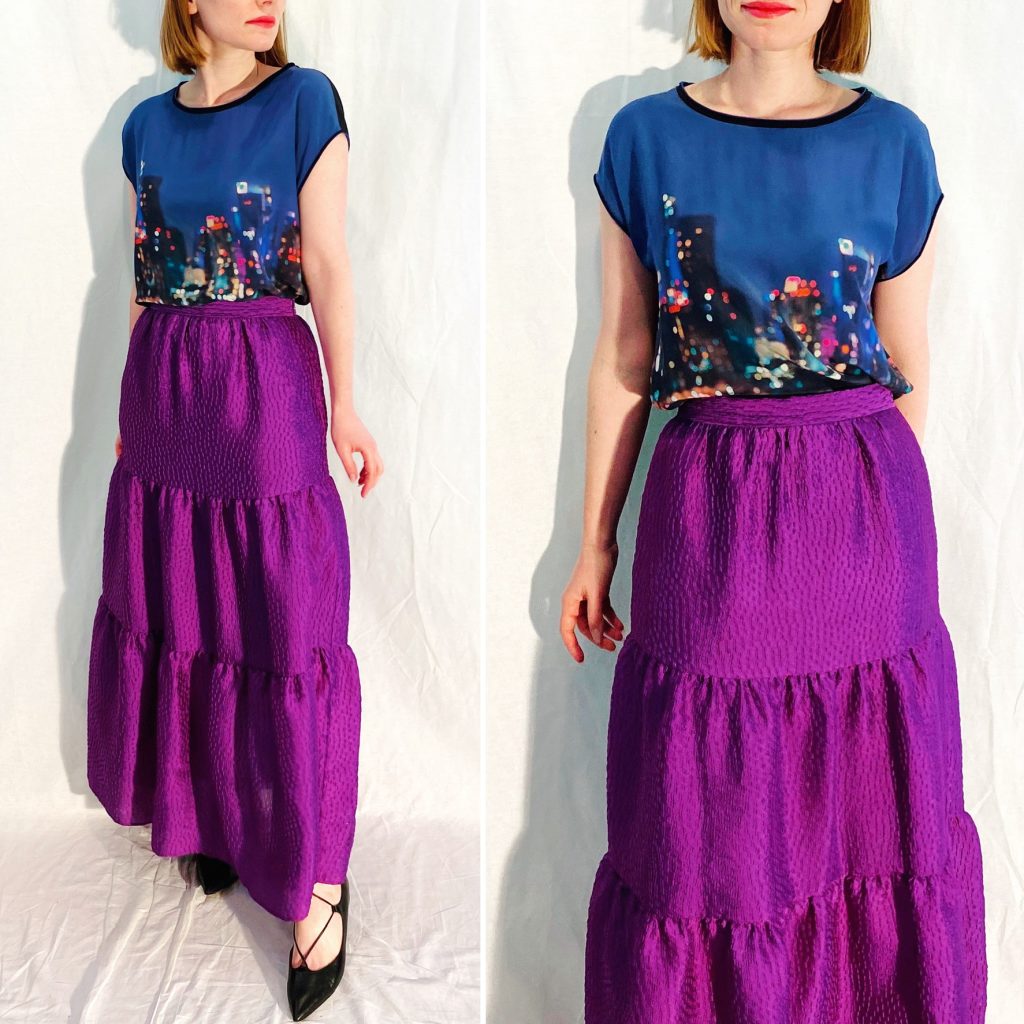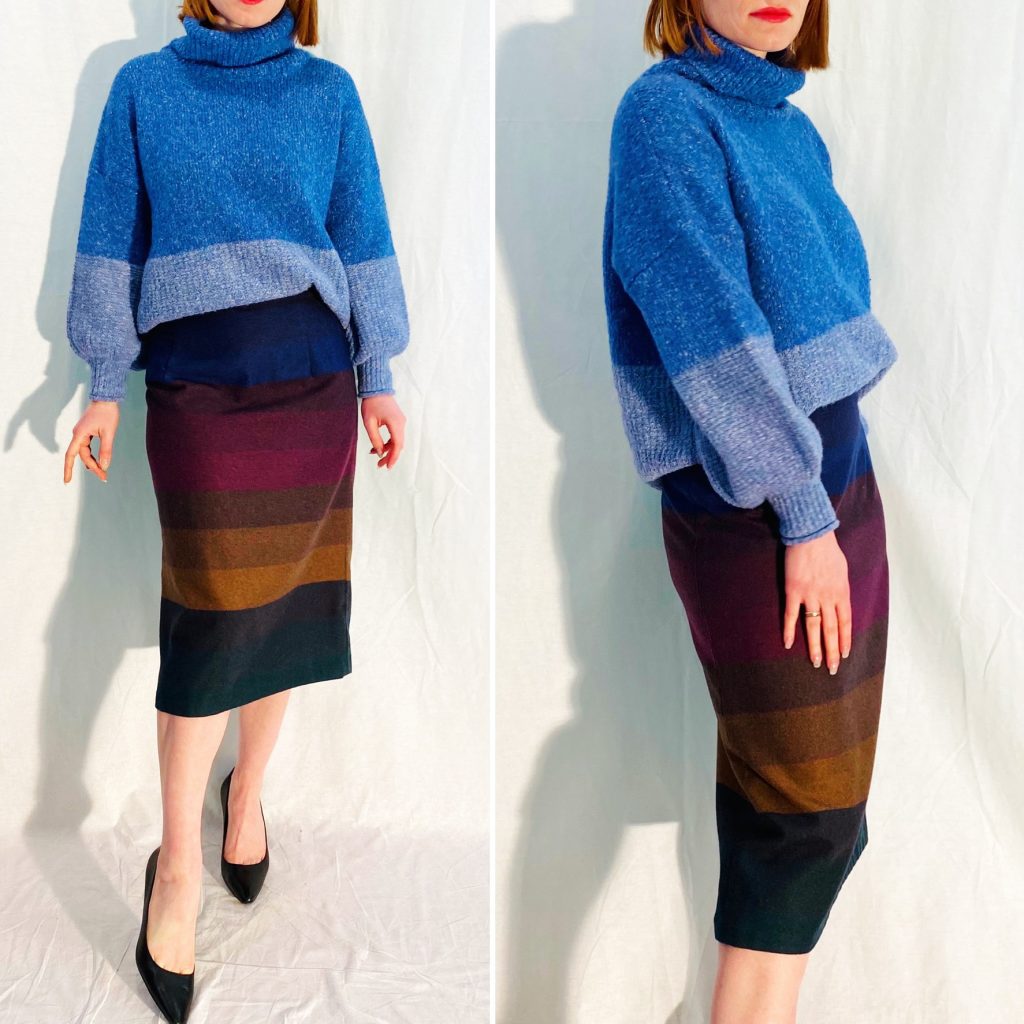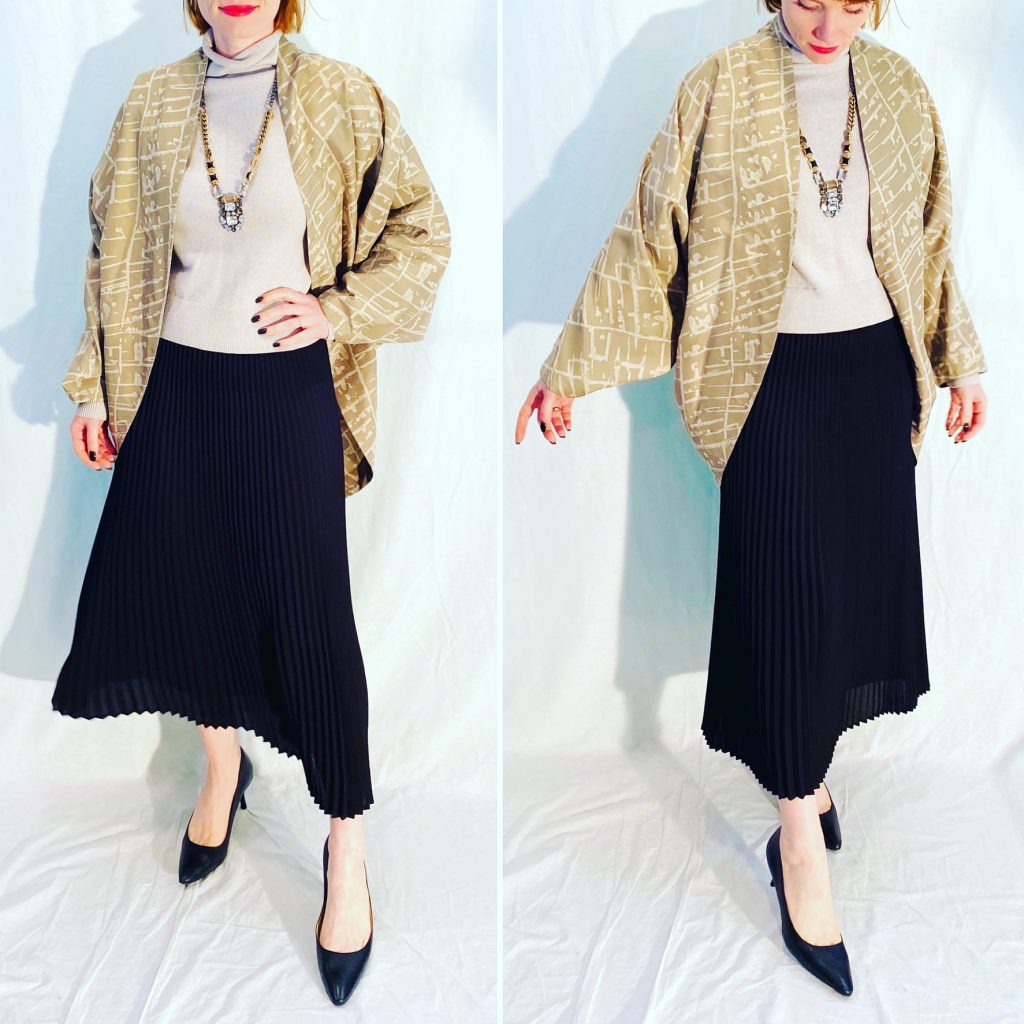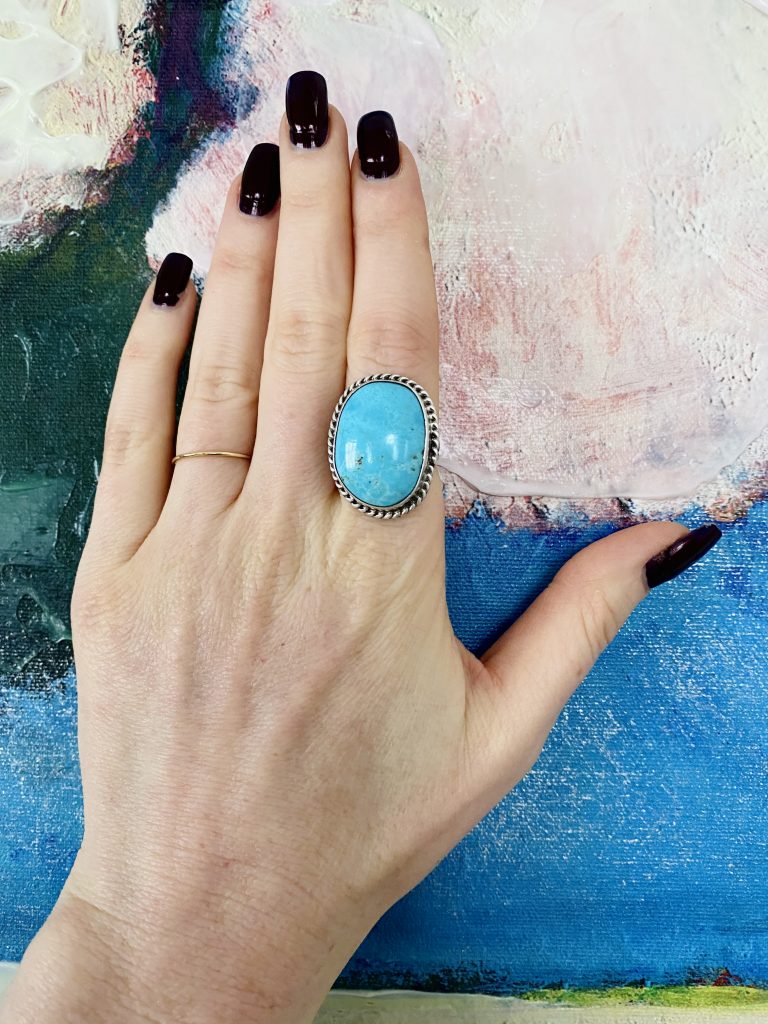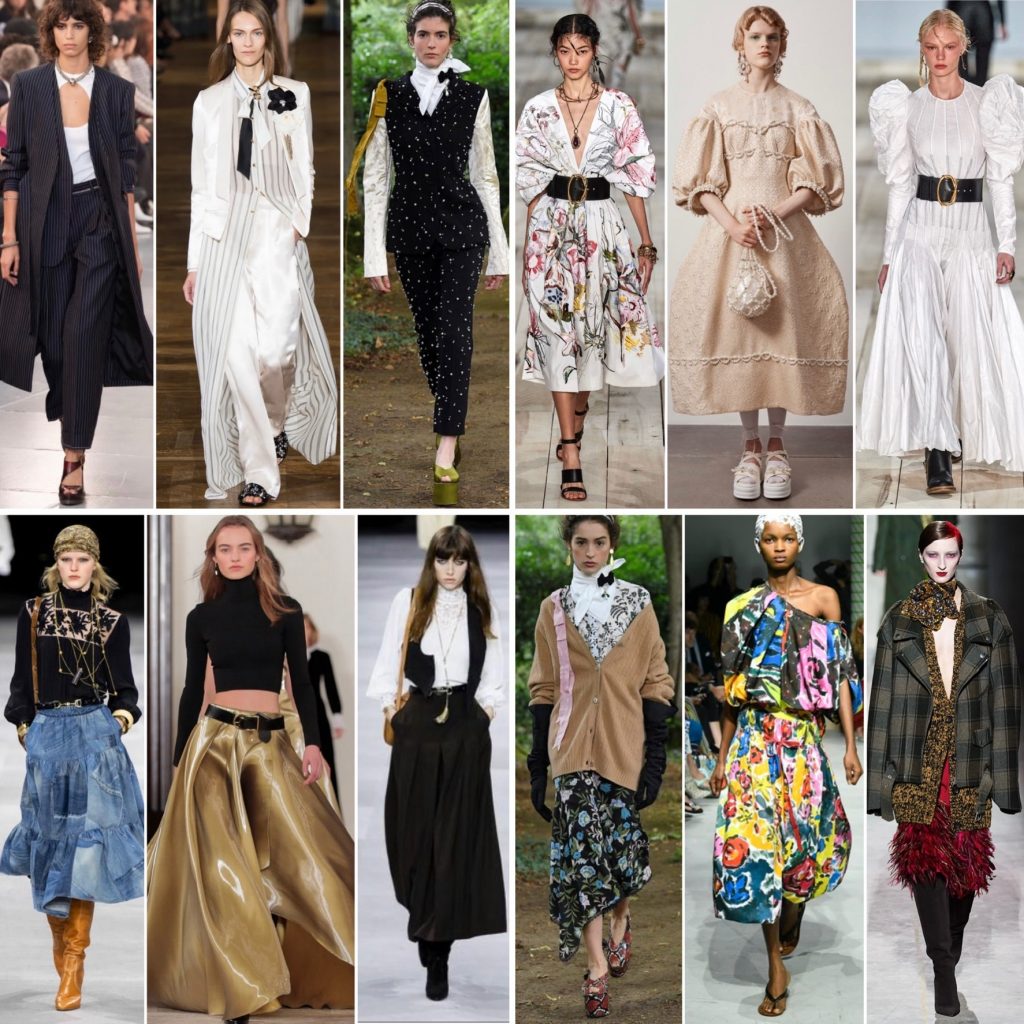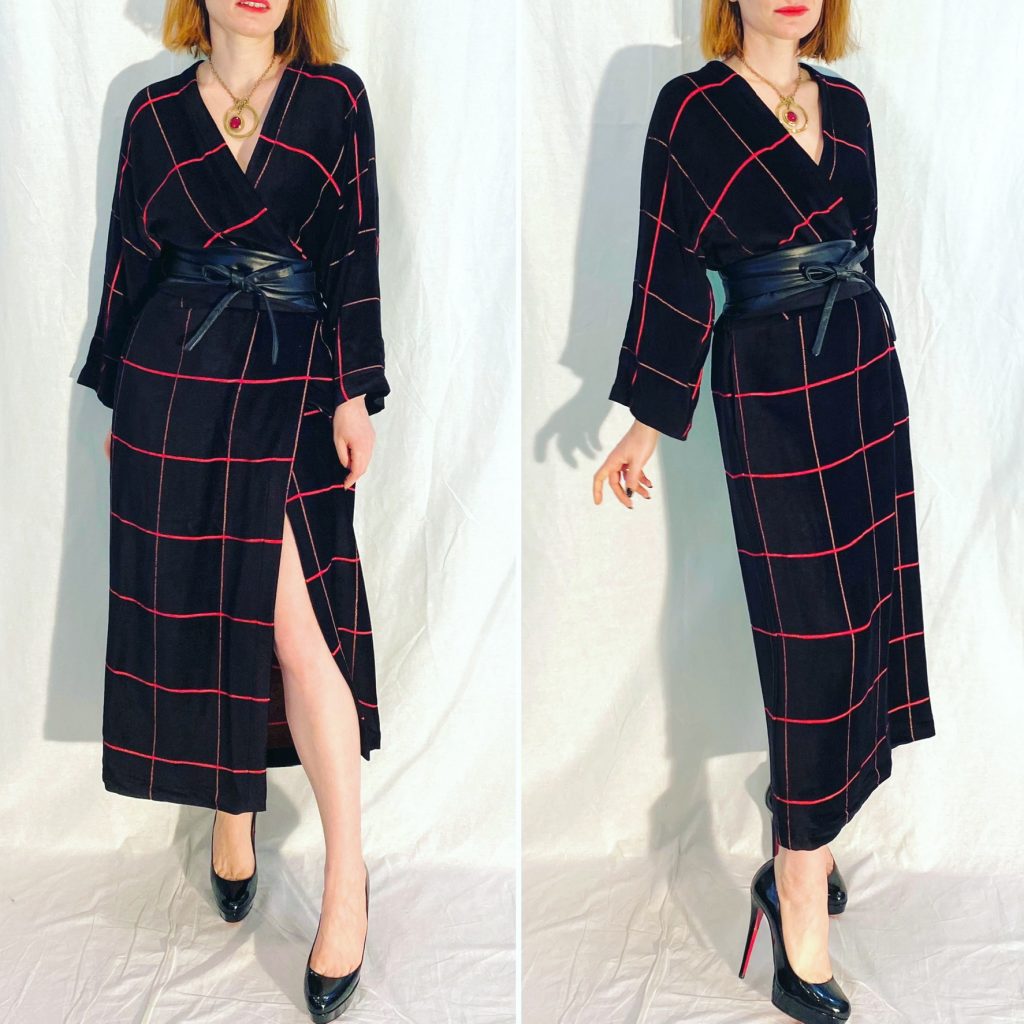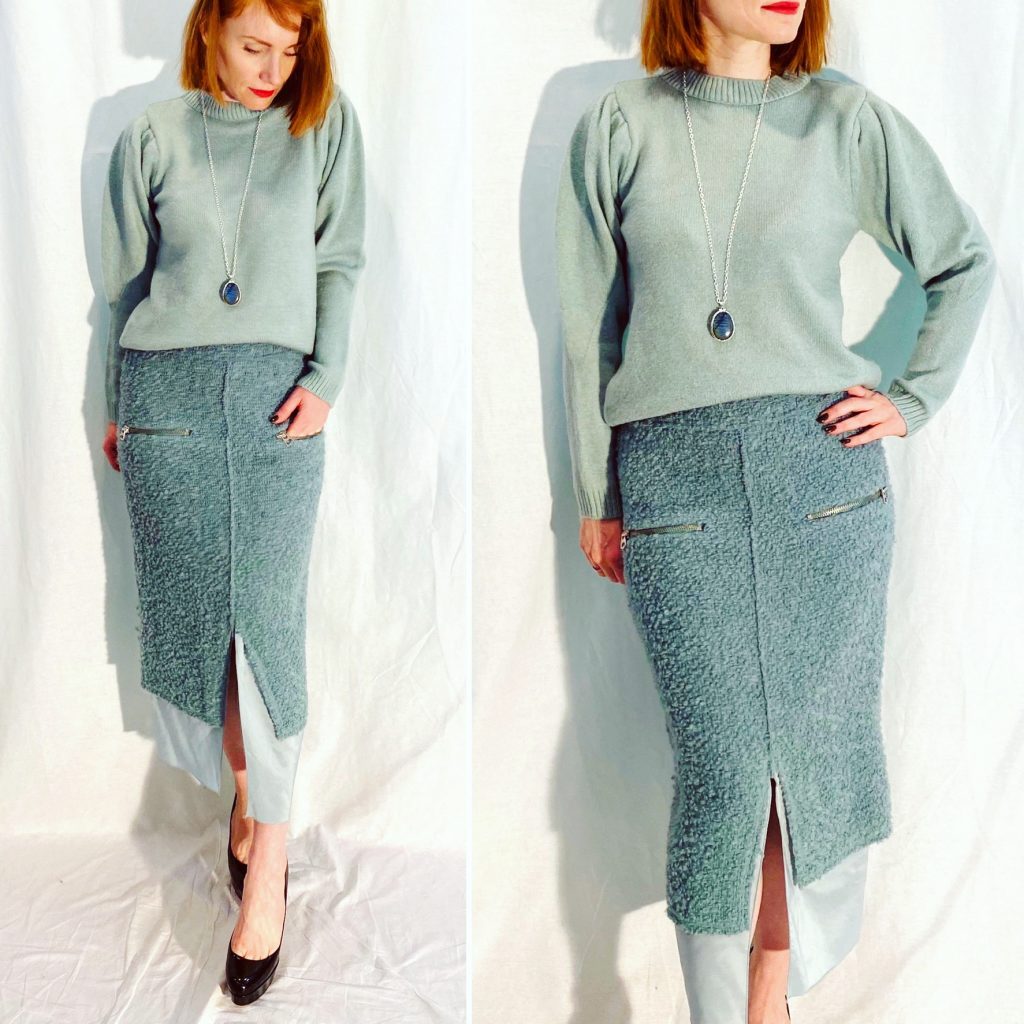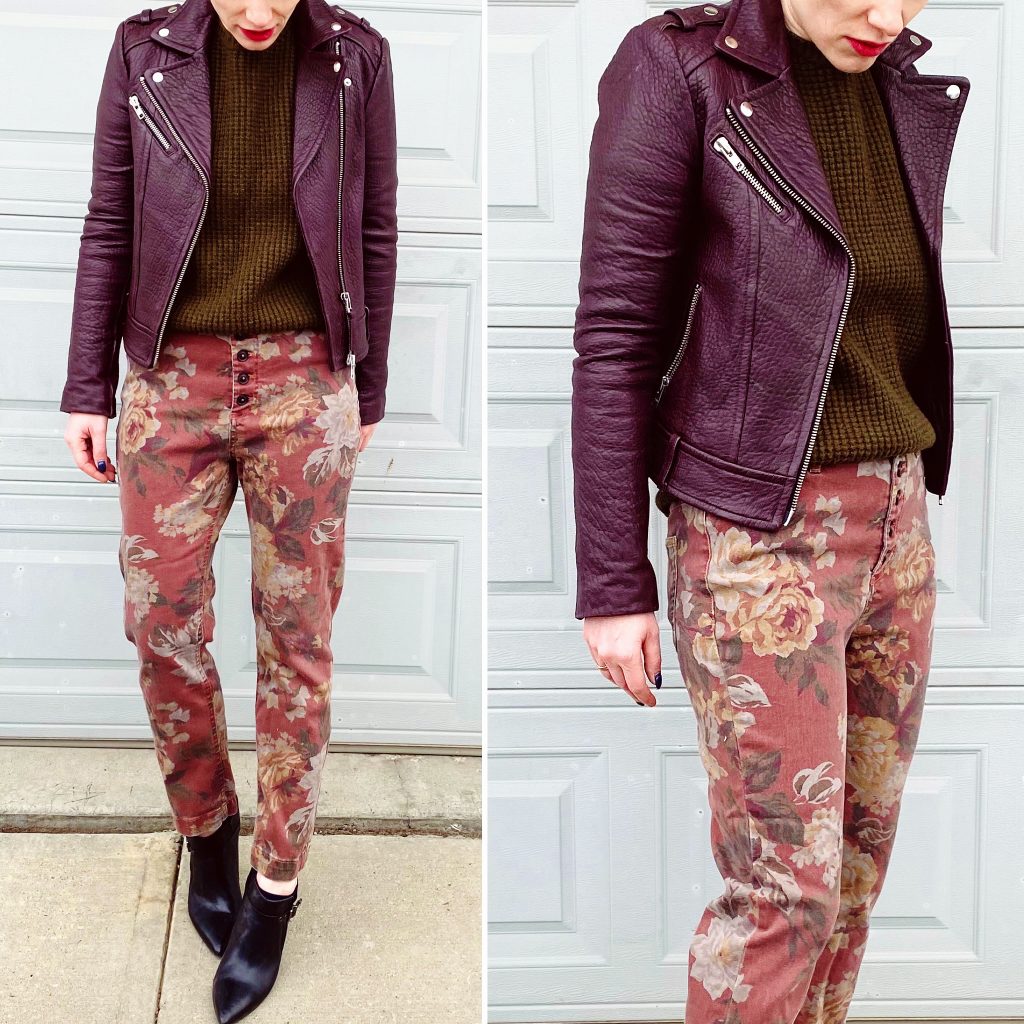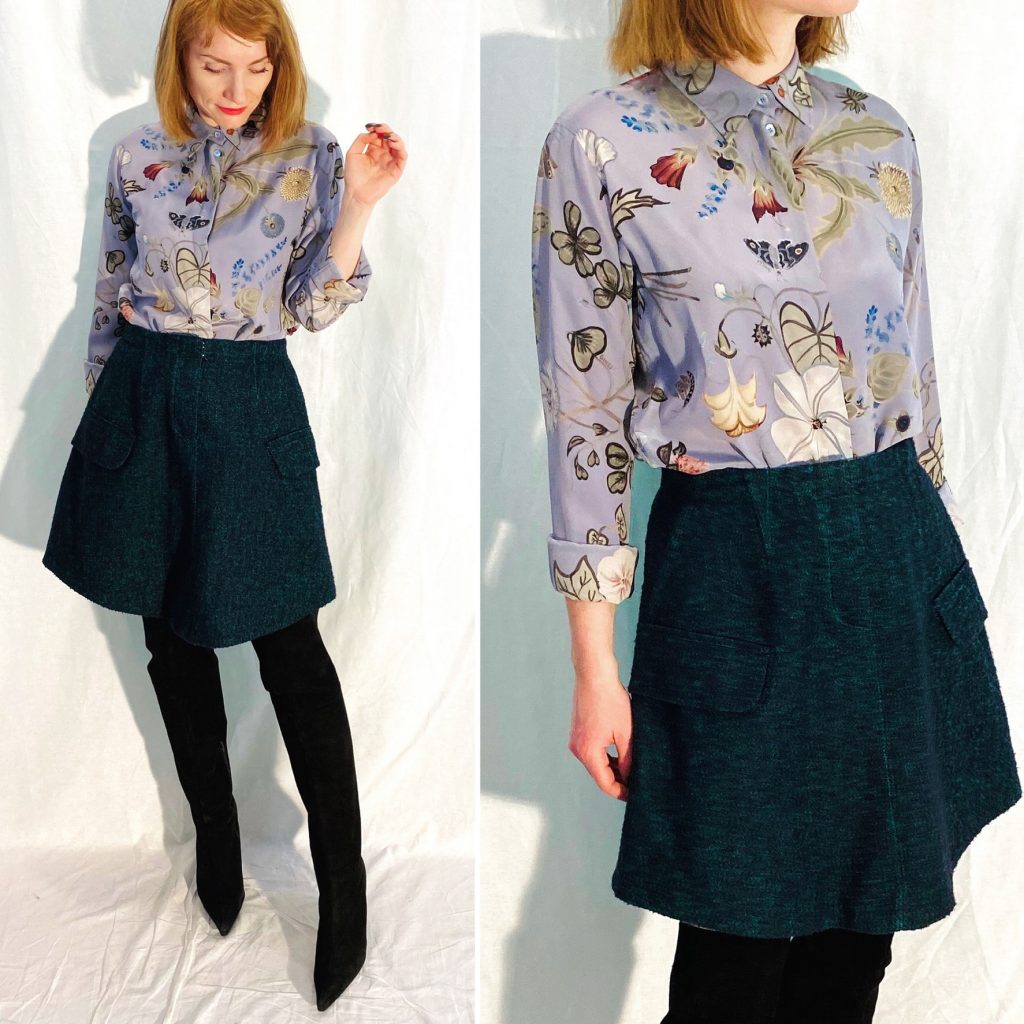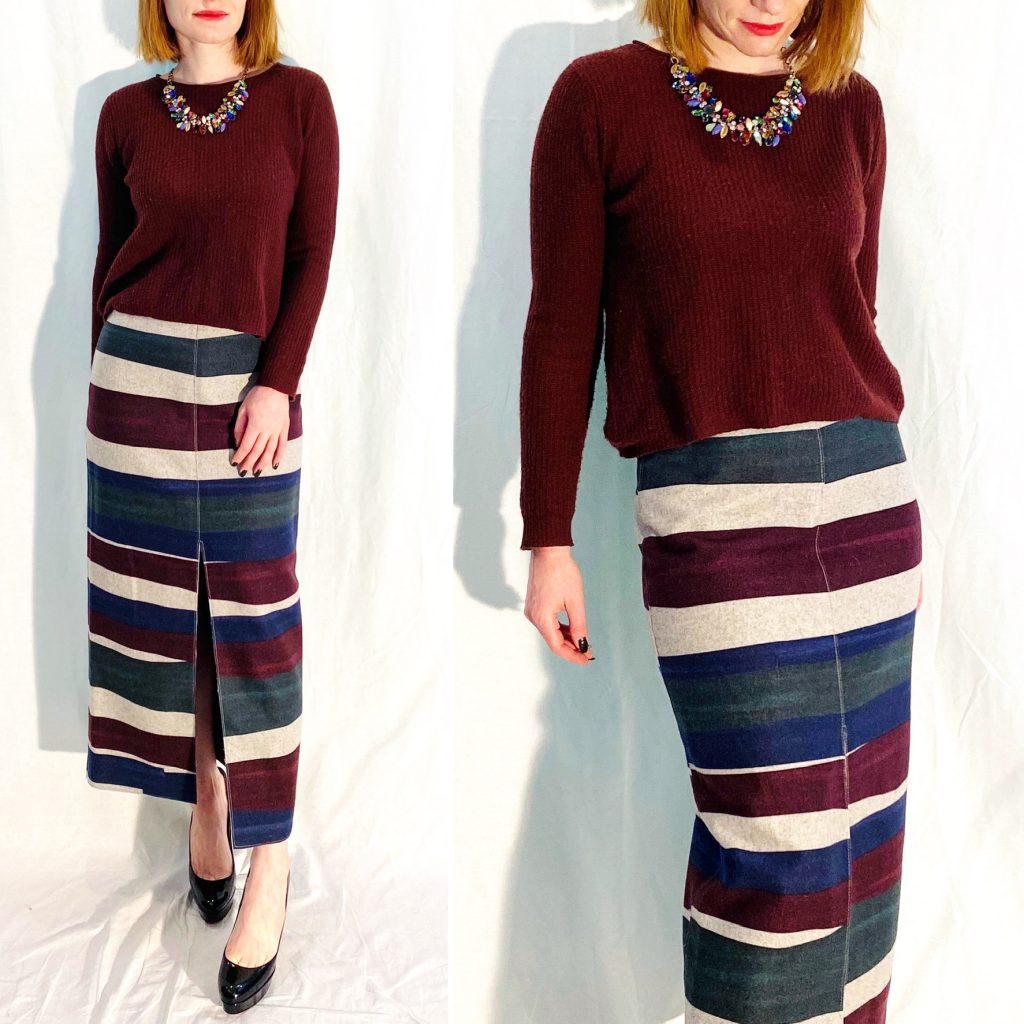Perfect Little Children – Sophie Hannah
A typical Hannah murder mystery with a bonkers plot. Never plausible, always fun. In this one, a woman sees an old friend, with whom she hasn’t spoken in a decade, and the friend’s children appear to have not aged at all. MYSTERY! Dun, dun, dun. Everyone has secrets, the story is incredibly convoluted, there is a horrible villain, and an emotionally satisfactory (as long as you don’t think about it too much) resolution.
A Darker Shade of Magic // A Gathering of Shadows – VE Schwab
I picked up these 2 books based solely on the cover. I don’t read a ton of fantasy, but I have the first one a whirl and enjoyed it. It’s all about parallel worlds, and some of them are full of magic, good and bad. One of the protagonists is a very special sort of magician who can travel between the worlds; the other one is a plucky young lady from (non-magical) Regency London who joins the magician on this adventures. I felt the second book wasn’t as strong, or else I lost interest. I found it difficult to relate to either of the protagonists, and the tone of the second book was darker as well, which wasn’t really my jam.
Monster of Florence – Dan Preston
Someone on IG recommended this me, and I’m glad I was able to thrift it eventually – it’s a great read, especially for anyone who enjoys real life crime stories. This is about the infamous serial killer who terrorized Florence in the late 70s/early 80s, but it’s also about the Italian criminal justice system and it’s the latter aspect that is truly mind-blowing. I hope I’m not spoiling the book for anyone by saying that the identity of the Monster remains to be conclusively proven; meanwhile, nearly a dozen different people have been accused of (and, in some cases, imprisoned for) the Monster’s crimes. Including, in a twist that could hardly be believed, Dan Preston himself!
Death in the City of Light – David King
Another true crime story, this one about a serial killer in Nazi-occupied Paris.
Killers of the Flower Moon – David Grann
More true crime, this was an excellent history of the murders of Osage Nation members starting in the 1920s, after oil was discovered on their land. The then-newly created FBI became involved in the investigation of the conspiracy, which took many years to unravel. The story is heartbreaking and familiar – it all comes down to, what else, greed and racism.
The Darkest Evening – Ann Cleeves
The latest Vera Stanhope murder mystery did not disappoint. Cleeves is my favourite contemporary mystery writer, and her books are my “comfort reading” material.
Solutions And Other Problems – Allie Brosh
I adored Hyperbole And a Half, and this was excellent as well although I didn’t connect with it quite as much.
How to do Nothing – Jenny Odell
I’ve written about this book before on the blog, but it’s a great meditation on living authentically (as a creative person, but also in general) in today’s capitalist hellscape, ahem, attention economy. Highly recommended.
Piranesi – Susannah Clarke
One of my fave books of 2020! I have tried to read Clarke’s debut novel (Jonathan Strange and Mr. Norrell) several times now, with no success. But Piranesi was a page-turner and a joy from the very first sentence. The less you know about this book going in, the better. Like The Glass Hotel, it’s a book that defies easy description, but it will stay with you for a long time.
Labyrinth of Spirits – Carlos Luiz Zafon
The Shadow of the Wind was one of my fave novels back in the day, though I lost track of Zafon’s series shortly thereafter. This book is the concluding chapter in the saga, it seems, though it also (mostly) works as a standalone novel. I enjoy Zafon’s writing and imagination, but I felt this book was too long in parts, and too violent at times. Overall, it was just so-so for me.
The Devil and the Dark Water – Stuart Turton
Turton’s The Seven Deaths of Evelyn Hardcastle is probably the most delightfully inventive mystery novel I’ve ever read (and I have read a LOT), so I was super exciting to read his follow-up. The Devil and the Dark Water did not disappoint. It’s as different as can be from TSDoEH but delightful in its own way. I don’t want to spoil the plot, so I won’t say too much about it except that it takes place in the 1600s on a ship sailing to Amsterdam from the East Indies.
The Quick – Lauren Owen
Another fantasy book that fell a bit flat for me. I enjoyed Owen’s take on the vampire lore, but had a hard connecting with any of the characters and found the pacing uneven and slow in parts.
Dead Wake – Erik Larsson
This is a non-fiction book about the sinking of the Lusitania. I didn’t know much about it going it, and I found the book an engrossing page-turner. I mean, one knows how the story will end, but reading the accounts of the various people involved – from the captain, to the passengers, to the British secret service, to the U-boat commander, etc. – made for a fascinating read.
Splendour and Squalor – The Disgrace and Disintegration of Three Aristocratic Dynasties – Marcus Scriven
This is the kind of book tailor-made for me: all about rich aristocrats behaving, well, scandalously. But it’s actually kinda boring, largely because the men covered in the book (scions of 3 aristocratic British families) are not very interesting characters — some are scoundrels, yes, but not charming or fascinating ones.
Shit, Actually – Lindy West
I LOVED THIS BOOK. Sorry for the all caps. I cut my internet teeth, so to speak, lurking on Television Without Pity for years, and this book is the essence of that site at its very best. Each chapter is a summary of a seminal movie, mostly from the 80s, 90s and 2000s, with plenty of commentary from Lindy. I love her writing and her perspective, even when I disagree with her movie assessments. Some of those movies, I haven’t even seen. No matter. I would honestly read her summaries of entirely fictional, made-up movies because I’m the kind of person who used to read TWoP recaps of shows I never watched.
The Middle Sea – John Julius Norwich
Norwich is one of my favourite historical non-fiction writers, so his books are always enjoyable to me. This was no exception, although I would caution that it’s not perhaps the most accessible book unless you already have a decent grasp of history of the various lands/countries surrounding the Mediterranean. There is a LOT of events covered in this book, from ancient times on, and the pace is brisk. There were times when even I, as a self-proclaimed history nerd, felt exhausted. But TL;DR: empires rise, empires fall; rinse, repeat.
Indians on Vacation – Thomas King
I have enjoyed a couple of King novels this past year, and have come to love his deft comedic touch on complex themes like identity, racism, environmentalism, etc. I picked this up confident I would like it, and intrigued by the premise (an older Indigenous couple on vacation in Europe) which reminded me of some of my favourite comic travelogues, Jerome K. Jerome’s Three Men series. And I did love it. It’s delightful and poignant, as expected; I also found it to be an interesting and realistic portrayal of a mature, long-term relationship and its complexities, which is something kinda rare.
The Italian Secretary – Caleb Carr
A serviceable Sherlock Holmes novel.
Temples, Tombs and Hieroglyphs – Barbara Mertz
I haven’t thought about pharaohs since I was a teenager (haven’t we all gone through an Egyptology period where we want to grow up to be archaeologists?) but this book has renewed my interest. It covers a long span of time from about 3000 BC to the Ptolemaic era, and felt like more of a cursory introduction to the subject matter and a commentary on historical study/research, but it was interesting nonetheless. I’m now looking for more books on this topic.
Daisy Jones and the Six – Taylor Jenkins Reid
This was an okay read, but not worth its hype in my opinion. I didn’t mind the format as much as I thought I would – it’s structured like one of those “oral history” articles in Rolling Stones where the narrative is cobbled together from interview fragments with different people – but the characters never really came alive to me. Daisy and Billy were supposed to be these two hyper-magnetic individuals, but it was only because everyone else said so; I think this story would work better as a movie or TV show for that reason, as it would allow charismatic performers to bring these characters to life. Also, the ending … woof. A total anti-climactic snooze.
The Guest List – Lucy Foley
Foley is a new-to-me mystery writer, but this won’t be the last of her books that I read, I’m sure. I thoroughly enjoyed this murder mystery set on a deserted island off the coast of Ireland, where a high profile wedding sets the stage for dark secrets to come unraveled, and bloody revenge to be done.
That’s it for 2020 books read for me. Tell me: what have you been reading lately?
